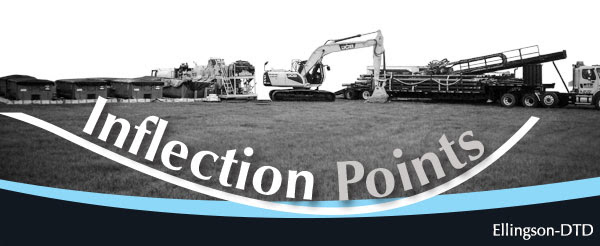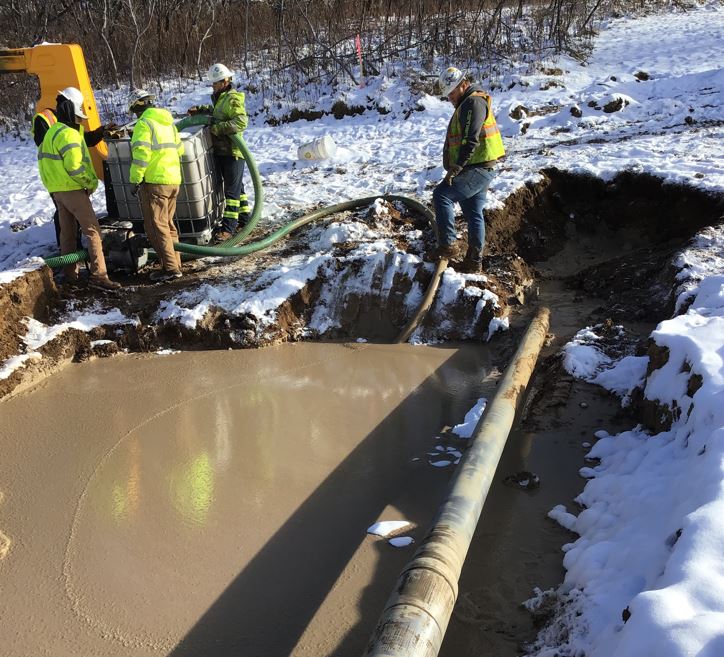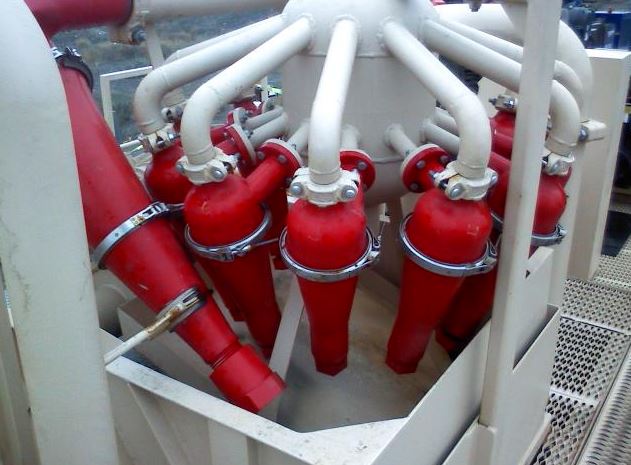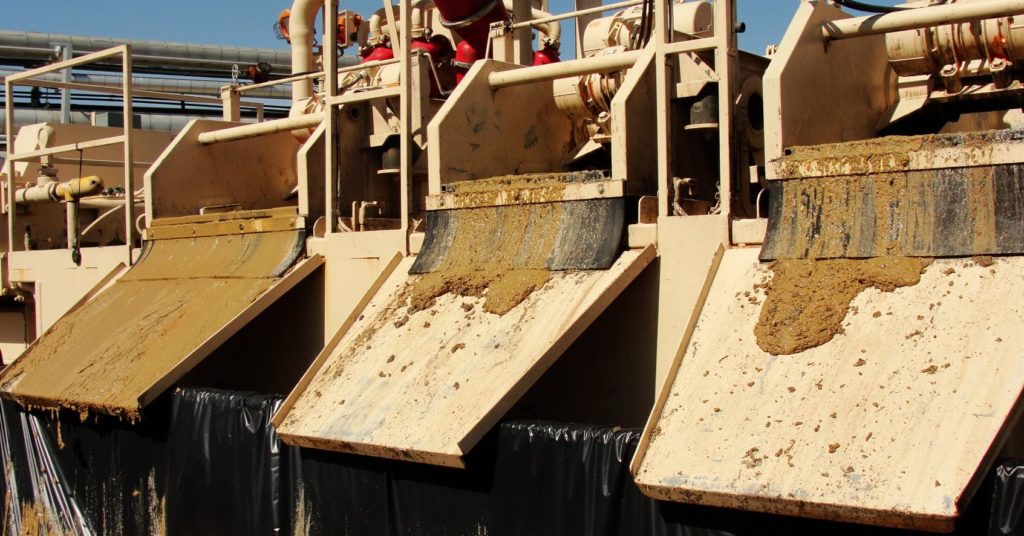Waste Handling 101

Volume 8, Issue # 8 – August 2022
Of all the questions we encounter regularly, some of the trickiest relate to the waste generated by installing an HDD well.
In this newsletter, we’ll try to tackle the three most common questions we hear related to this subject.
- How much waste will you generate?
- What kind of waste is it?
- How do I get rid of it?
Drilling Waste Volume = Borehole Volume….right?
Ehhhh… not exactly.
Although this is certainly an important calculation to make, it does not tell the whole story.
In theory it’s easy to calculate the volume of a bore and a couple of exit pits.
- Establish the largest diameter that the bore is going to be reamed to (which will likely be 1.5x the outside diameter of the well materials).
- Using pi*r2*length calculate the volume of the borehole.
- Add approximate volume of the entry/exit pits to be excavated

Fig 1: Don’t forget to include the mud pit when calculating total waste volumes
Fluff Factor
Soil and rock occupy a certain volume in a native state but expand in volume when excavated. Some might call this the “fluff” or use a more technical term like “expansion factor”. Regardless, it must be accounted for when calculating excavation volumes.
For the typical sand and silt we drill in, that factor is around 1.3 – a 30% volume expansion. So, multiply by that and you have a working number for the estimated volume of cuttings and associated soil waste from the project.
Okay so we’ve calculated the quantity of solid cuttings that will be generated.
Time to account for the mud.
HDD is a mud rotary-based method. As such, the drilling waste stream will include drilling fluids in addition to the soil cuttings.
We already calculated the borehole volume. Is that how much mud to expect?
Unfortunately, it’s more complicated than that.
For one thing, you need to add the volume of the mud system and all the hoses. You also need to account for the “real world”.
Actual well bore volumes seldom match the calculated volume. Sandy soils will collapse into the bore, sometimes a lot, and that material is transported out as cuttings.
Particularly on longer bores, the well bore itself forms more of an egg-shape than a circle as the heavy drill rods lay in the bottom of the hole and disturb more soil. Sometimes we need to ream the bore a few inches larger than we had initially planned, due to encountering squeezing formations or to provide more clearance for pullback in a collapsing formation.
All these factors increase the volume of the bore and produce more waste.
On big projects, we will attempt to recycle as much of the drilling mud as possible; however, we always lose some of the mud from our recycler as part of the cuttings discharge. That’s because the shale shakers and cyclones of the recycler are less than 100% efficient. We mix more drilling fluid to account for the loss, but the wasted slurry becomes part of the waste volume that must be disposed.

Fig2: Hydrocyclones help separate soil cuttings from drilling mud, but they aren’t 100% efficient.
Geology Matters (as always)
The hardness of the formation profoundly affects the waste volume calculation – if we are in a soft formation that is drilling well, we can advance the bore very quickly which generates less excess mud.
But if we hit a harder formation, like a big boulder or unanticipated bedrock it will slow us down considerably. If we drill more slowly, we are still pumping mud, losing some in the slurry. The longer we rotate in one position, or advance very slowly, the more mud gets wasted.
The well development process also contributes to the total waste volume. Usually, the initial flush of development water through the well produces a lot of cuttings and mud.
Fortunately, once the initial flush has been completed, the amount of suspended solids decreases significantly. Generally, this remaining development water can be treated separately from the mud/cuttings waste stream.
ANSWER THE QUESTION!!!!
Like typical drillers we’ve hemmed and hawed and danced around giving a concrete answer. But the question remains: how much waste will be generated?!?
To hazard a conservative guess, let’s call it 4.5X the borehole volume if we’re not using a mud recycling unit. 2.5X if we are.
These are pretty reasonable guesses based on average or typical conditions. But you must understand that the factors listed above can result in very large variations from predicted waste volumes.
Be prepared for the actual volume to be very different than this “rule of thumb” guesstimate.

Fig3: So many different variables affect the volume of drilling waste produced, it is a very difficult quantity to estimate accurately.
Okay We Did Some Fuzzy Math…Now What?
Fortunately, the other two questions listed in the introduction are somewhat easier to answer.
What kind of waste is it?
The waste that we’ve been talking about all this time is a slurry mixture of drilling fluid entrained with soil cuttings. You can typically expect between 30% and 50% solids depending on if we’re running a mud recycling unit.
Okay….so how do I get rid of it?
Not all landfills will take a slurry like this. Most facilities have a minimum solids content requirement (paint filter test).
So, you have three choices:
- Find a facility that will accept a slurry and haul it there in a vac truck.
- Solidify the slurry to a point where it will be accepted by a “regular” disposal facility.
- Let the mixture settle out over time. Decant off the liquid and haul away the solids.
There is no “right” or “wrong” choice here. Each comes with its own advantages and disadvantages.
Hauling the slurry away in a vac truck is quick and easy. And it absolutely minimizes the project manager’s headaches. Consequently, it is typically much more costly than the alternatives. Local vac truck rates and distance to the nearest such specialty disposal facility will weigh heavily on this option’s economics.
Solidifying the mixture might bring down hauling and disposal costs, but the process adds time and complexity to the field effort, and the required solidification polymers aren’t exactly free. This approach also increases the number of soil bins required on site since they can’t be filled up all the way.
Letting the slurry settle and separate affords the benefits of cheaper solids disposal without the cost of solidification polymers. However, it requires a lot of time. Not many sites can abide a couple of roll-off bins just sitting around for months on end while gravity works its magic on all the fine particles in suspension.
Clear As Mud
Waste handling considerations are often an overlooked aspect of drilling projects. Mud rotary operations can be particularly complex.
Hopefully this primer provides a framework for how to start thinking about waste management considerations on horizontal well installation projects. It can add up to be a significant portion of the final project budget, so be sure to give it its due consideration.
And as always, don’t be shy about reaching out and using our experience as a resource.
We’re here to help.
Tags: directional drilling, HDD, mud rotary, waste handling